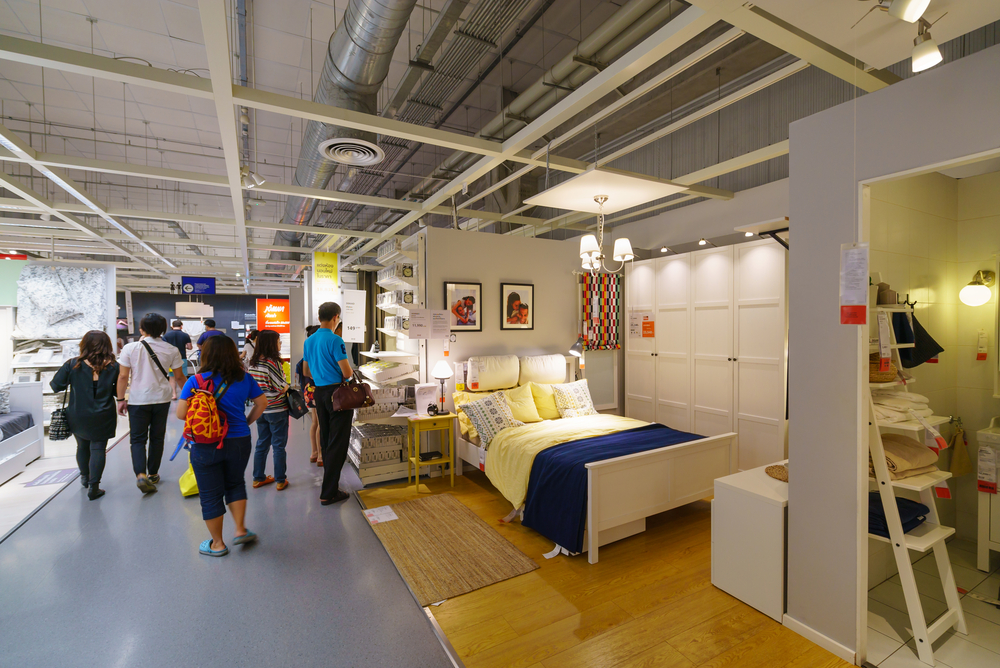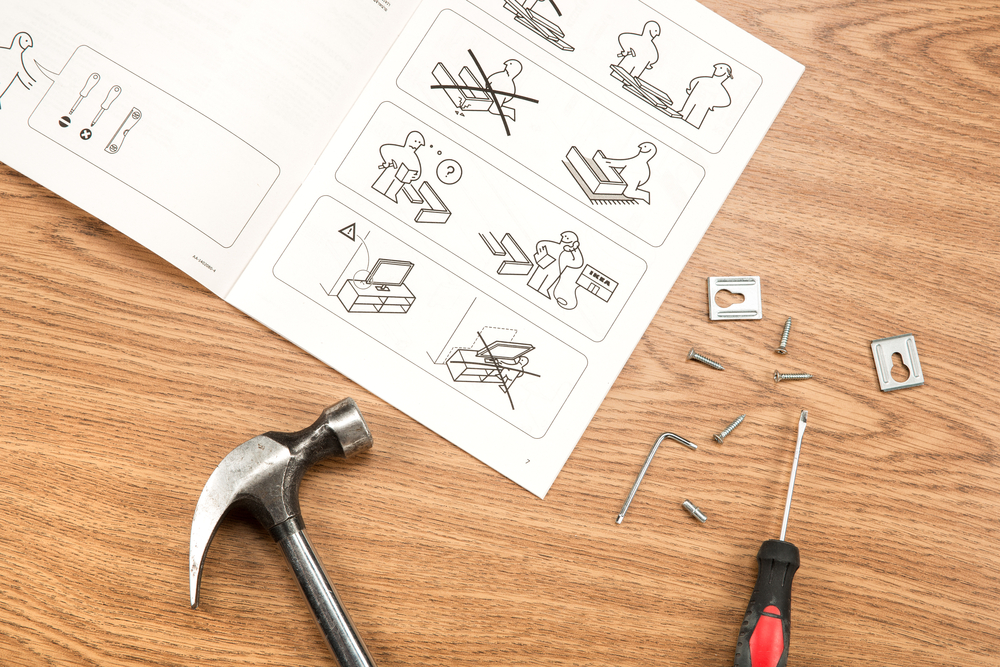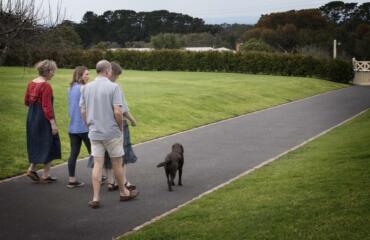
“ It’s a fucking $8 table!”
Maybe that’s all there is to it.
It’s Charles Chilvers’ explanation for why IKEA’s simple Lack table seems to be so popular.
Chilvers and his partner Clare Gillett recently bought their first house in Bendigo, where they both work as doctors. They thought: new house, let’s splurge on a nice kitchen table.
But their splurging couldn’t extend to the table’s matching chairs, which cost more than $100 each. So Clare did some Googling and discovered cheaper options at IKEA.

They went to IKEA looking for chairs, and came away with a Lack table.
One look at that price and “I’m pretty sure I said ‘It’ll be useful somewhere’,” says Chilvers.
Today, the table sits in their living room. It’s used mostly as a place to dump mail, TV remotes or the odd wine glass.
It boggles the mind when you think about it. One company has so successfully cornered the market for producing things like this – the things we dump our mail, remotes and wine glasses on – that its total revenue eclipsed $46 billion last year.
Among the sea of bookshelves, beds, cupboards and containers flowing out of IKEA is one small, unassuming table.
The Lack.
You know the one. The top is about the size of a large pizza box, with four legs that just screw in, no tools required. The easiest flatpack of them all; so easy that the assembly instructions amount to a single page.
It’s a surprisingly light table, and relatively sturdy. It comes in seven colours. Pay more and you can get it finished in “dynamic” gloss.
They’re cheap, lightweight, and look nice in your shared lounge room. Not unimportantly, they’re fairly disposable. Easy to leave on the nature strip when the lease runs out and you’re forced to move one more suburb out.
They’re also multi-functional. An $8 square on legs has a surprisingly diverse number of applications.
“It’s designed so that you can just pop it into any house and it’ll work,” says textile designer Anna Woodruff. “You can do anything with it. And the price is amazing. It’s the cheapest way to achieve so many different functions – to hold up a TV, or as a coffee table, whatever.
“It’s a blank canvas, really.”
IKEA is something of an obsession for Woodruff. She says that it’s a common sentiment among designers she knows.
“I’m always telling people to, you know, ‘spend some money and support local designers’, but a lot of us have this fetish for IKEA anyway,” she says.
“It’s this bizarre collision of values. We’re always harping on about the value of good quality stuff that lasts a lifetime, then we’ll go to IKEA and buy stuff that lasts five minutes.”

IKEA is not like other brands. There’s something in the mix of good design, aspirational Nordic values and cheap meatballs that inspires a kind of fanaticism in people.
It’s easy to see why: the stuff IKEA produces is affordable, looks nice and is sold as the total embodiment of our domestic dreams.
At a time when the outside world has never seemed more alarmingly complex, there’s plenty of money to be found in how we design our domestic spaces. As IKEA’s Canadian slogan puts it, ‘long live the home.’
It’s powerful marketing, but it conveniently deflects attention from IKEA’s questionable tax practices, environmental impact and global supply chains.
The Lack table not only tells us a lot about our lives, it tells us a lot about IKEA.
We haven’t always assembled our furniture ourselves. Decades ago, when Europe was tearing itself apart at the height of the Second World War, a teenager named Ingvar Kamprad lived in the south of Sweden.
Kamprad had shown an entrepreneurial spirit early. By the age of five, so the story goes, he was buying matchboxes in bulk and selling them to his neighbours. The kid was something of a capitalist child prodigy.

He joined the Swedish Socialist Unity Party, successor to the country’s Nazi Party, becoming active in the organisation. The Swedish Security Police noticed. They started covertly opening his mail, and began a file on him.
By 1943, he was a very busy young man. In between recruiting members and donating money to the Swedish Nazi party, 17- year-old Ingvar Kamprad founded IKEA.
Kamprad spent the second half of the 20th Century building an empire. IKEA is now the largest furniture seller in the world, employing 155,000 people and turning over $2.35 billion in cafeteria and food market sales alone.
He has since officially stepped away from IKEA’s board, but the 90-year-old’s presence is everywhere.
“Unleash your inner Ingvar Kamprad,” a sign declares next to some stepladders deep inside IKEA’s Springvale store, as if he’s a household name.
In a sense, he is. IKEA is an acronym taking its letters from his initials, IK, plus Elmtaryd and Agunnaryd, the family farm and town in which he grew up.
Kamprad has since apologised for his Nazi past, declaring it the “greatest mistake of my life.”
He’s also presided over the development of a group of companies that has made him very, very rich. How wealthy? It’s impossible to say.
The Lack begins its life in Zbaszynek, a small town in western Poland with a population of 5000 people. It’s home to one of IKEA’s major wood factories. Every year, some 10 million coffee tables are constructed here and shipped out to IKEA stores the world over.
Simplicity might be one of IKEA’s official “shared values” but it doesn’t seem to apply to the group’s corporate structure. As a 2006 Economist investigation found, assembling flat-pack furniture is “simple compared with piecing together the accounts of the world’s largest home-furniture retailer”.
All in all, there are 14 groups of companies within IKEA. Many of these are ultimately owned by the Stichting INGKA foundation, one of the biggest non-profit organisations in the world. It’s not even Swedish – it’s based in The Netherlands.
According to a 2014 Australian Financial Reviewinvestigation, IKEA pays an effective tax rate of 3 per cent on its Australian profits. Australia’s corporate tax rate is 30 per cent.
Sales in Australian stores are up, but profits are down. They’re apparently being eaten up by “franchise fees” and “interest payments” paid to the Inter IKEA Group in Luxembourg and the IKEA Group in The Netherlands.
In other words, fees that IKEA is paying IKEA.
“We have always looked at taxes as a cost,” Ingvar Kamprad has said, “just as any other cost that comes with doing business.”
For Kamprad, minimising tax is “a natural part of the company’s low-cost culture.”
Keep the cost of business low, so the thinking goes, and not only do you increase your profits, but the cost of your products stays low as well.
It’s a cheap way for a big business to buy good will. Why would consumers get upset when the end result is an $8 table?
The Lack begins its life in Zbaszynek, a small town in western Poland with a population of 5000 people. It’s home to one of IKEA’s major wood factories. Every year, some 10 million coffee tables are constructed here and shipped out to IKEA stores the world over.
A 2009 National Geographic documentary explains that the tables are designed and constructed according to the “board on frame” technique. Inside the table is nothing but paper, arranged in a kind of honeycomb design. The technique keeps both sides of board firmly attached to each other, and allows for heavy objects to be placed on top of it.
Paper is having something of a moment at IKEA. The 2017 catalogue makes a big deal about the material. Driving this focus, it claims, is a desire for “staying environmentally conscious.”

IKEA talks about paper the way Apple talked about removing headphone jacks from its new iPhone: as nothing less than a revolution.
“We always want to aim for something original, something bold – something better for people and the planet,” the catalogue boasts.
Environmental responsibility is a very big deal at IKEA. Every store in every country is now lit by LED lights. Seventy-one per cent of the waste in Australian stores is recycled; the upcoming Användbar range has been designed around the idea of sustainability in the home and the company aims to become ‘Forest Positive’ by 2020. It’s not entirely clear what this means.

IKEA openly admits that it uses 1 per cent of all the commercially harvested wood in the world. As their 2016 sustainability report puts it, “this means we have the ability – and responsibility – to influence not only how the wood is sourced but also how the forests are managed.”
It’s an admirable attitude for a company to have, although it sits somewhat awkwardly with the notion that IKEA has single-handedly ushered in the era of throwaway furniture. A Spike Jonze-directed commercial from 2002 urges us not to feel too bad about chucking stuff out. As a woman looks morally conflicted about an IKEA lamp she’s placed outside her apartment, a man with a Swedish accent exclaims, “The new one is much better!”

The dilemma is not lost on Elise Rose, who has deeply conflicted feelings about her Lack.
“It’s very mass market,” the 25 year-old graduate student says of her table, which has adorned four share houses in five years. “But it’s almost a rite of passage of being a poor renter.”
She’s currently arguing with her housemate about it. He wants to upgrade their furniture; she’s holding on.
Her Lack is getting old. The surface is gently fading, and liquid has stained and bubbled a bit of the top. But it’s still functional.
“I’m kind of nostalgic,” she says. “It reminds of that time when I was 20 and finally trying to be a grown-up. I was finally making introductory grown-up decisions about things like rent, tax, furniture.”
Krati Garg’s life has similarly evolved around her table. The newly arrived oral surgeon and her husband had been in Australia for barely a week when they first visited IKEA.
“We spent $50 on that trip,” she says, “which was an amazing amount of money for us at the time.”
After a year in Sydney, the couple settled in Melbourne. She bought a Lack table.
“You can do anything with it. And the price is amazing. It’s the cheapest way to achieve so many different functions – to hold up a TV, or as a coffee table, whatever. It’s a blank canvas, really.” — textile designer Anna Woodruff
Her Lack has spent most of its life accumulating the detritus that characterises settling down: bills, newspapers, work documents. Eight years and a pregnancy later, the table has been repurposed.
“It might not be very chic or classy,” Garg says, “but it’s a very good kids’ table. The height is perfect for my son.”
For Garg, a key attraction of IKEA is that you assemble the furniture yourself.
“There’s a sense of achievement afterwards,” she says. “You feel like you’ve crafted this thing yourself, even though you haven’t. It must be like what my son feels when he assembles Lego.
“It’s pretty much Lego for adults.”
This is a major factor in IKEA’s success. So many of us spend our days buying our way out of making things, but at IKEA we buy our way back in. It’s win-win: customers imagine themselves to be more handy than they probably are, and IKEA outsources the furniture construction cost and labour to the customer.
Shopping at IKEA remains an event. Melbourne only has two stores, so chances are you have to do a fair bit of driving to get to either one. Might as well make a day of it, might as well have lunch in the cafeteria and bring the kids to play in the ball pit.
There are more than 380 of these monumental altars to domesticity around the world. You enter the store wanting one table and you get spat out the other end with a full trolley.

“I love knowing exactly what they’re doing to you,” Anna Woodruff says about the IKEA retail experience. “You’re on another planet; you have no idea what time it is; you know that they’re getting you to buy stuff you don’t need.”
She remembers her first visit clearly. A red Lack table was her very first purchase.
Woodruff had just moved into her first share house. Owning little furniture, she dumped her TV on the floor of the lounge room. Her housemate was driven crazy by the fact that it wasn’t on top of something. So she dragged her along to IKEA one Friday night — Valentine’s Day, no less. She was instantly struck by the table.
“It was the cheapest way of holding up a TV,” she says. But, more importantly, “it was red. The same as my lipstick and my car. It’s my favourite shade of red.”

She and her friend have since moved into different houses, but whenever they catch up they visit IKEA.
“I always have this moment of clarity right at the checkouts,” Woodruff says, “When I ask, ‘What have I just bought myself?’ ”
It’s an impressive magic trick, what these stores pull off. Any nagging doubts we have about who benefits from all of this are smoothed over by the activation of our domestic desires.
We flick through the famous catalogue, easily forgetting that it’s one of 213 million printed worldwide, and think: one day. One day we’ll be able to afford a nice place in a nice city; one day we’ll know the right kinds of people to host at dinner parties around our extendable dining tables; one day we’ll teach our kids the alphabet on butcher’s paper artfully laid out on birch veneer.
In the meantime, we have the Lack.

